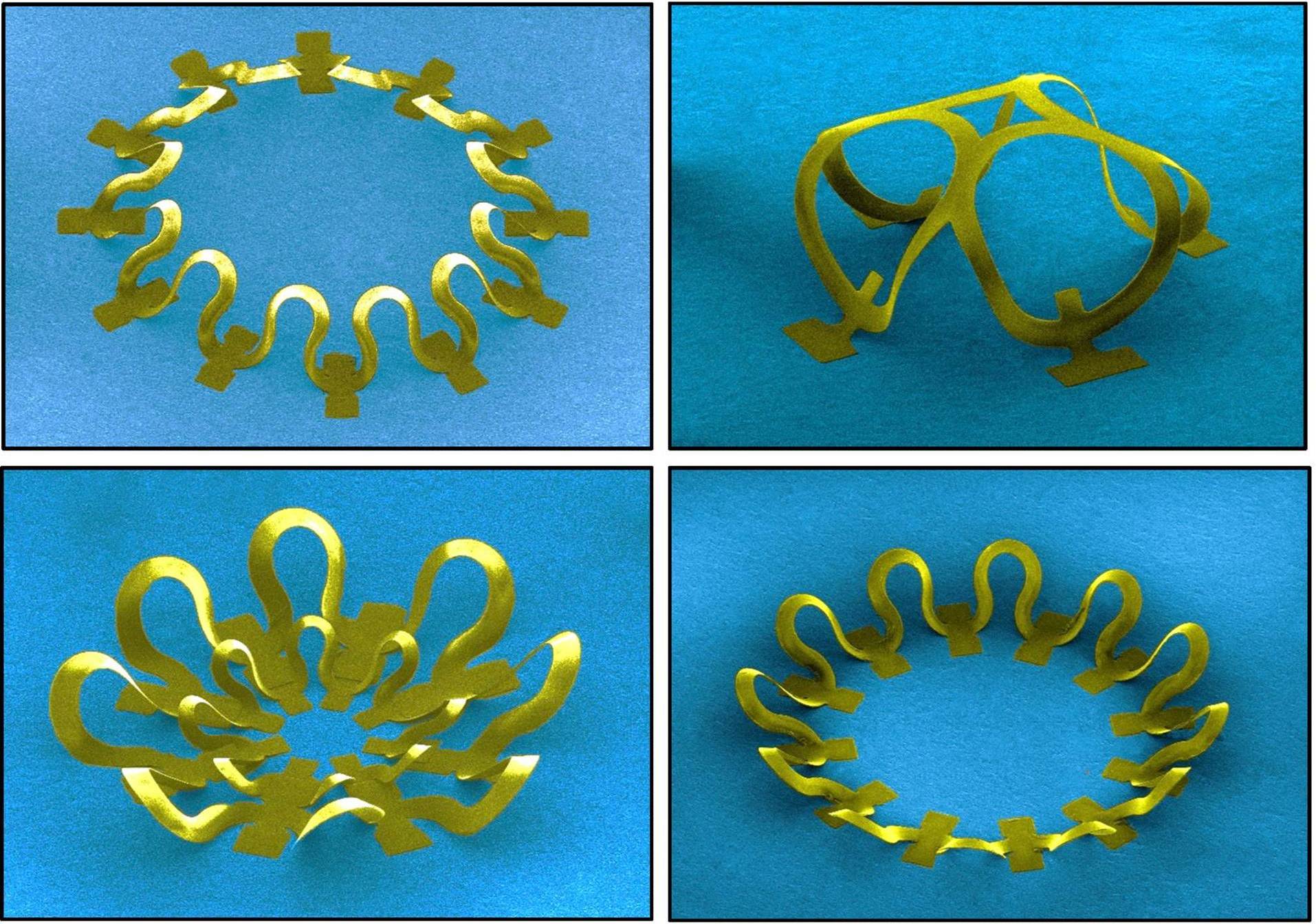Pop-up assembly relies on compression buckling. If that sounds like one of children's books, with the little structures that fold out when opened, that's because those are a good analog. Pop-up fabrication starts as a flat two-dimensional structure and 'pops up' into a more complex 3-D structure. Using a variety of advanced materials, including silicon, the researchers behind it have produced more than 40 different geometric designs, including shapes resembling a peacock, flower, starburst, table, basket, tent and starfish.
So why is it better than 3-D printing?
"In just one shot you get your structure," said co-author Yonggang Huang of Northwestern University. "We first fabricate a two-dimensional structure on a stretched elastic material. Then we release the tension, and up pops a 3-D structure. The 2-D structure must have some place to go, so it pops up."

First, a two-dimensional structure is fabricated and transferred onto a stretched elastic material. Then the tension is released, and the desired 3-D structure forms by popping up. Experimental images of flower-like structures are shown here. Credit: University of Illinois
The advantages of the new pop-up method are numerous, they say. The technique is fast and inexpensive, and it can: be used to build many different structures at one time; utilize many different materials, including silicon; incorporate different materials into one hybrid structure; be used to build structures on both micro- and nano-levels (down to a thickness of 100 nanometers); and produce a wide range of different geometries.
With 3-D printing, on the other hand, it is difficult to integrate more than one material in a structure; it is almost impossible to print semiconductors or single crystalline metals; and speed is slow.
Complex, 3-D structures form readily in biology -- think of bones, neural circuits, networks of veins -- but manmade devices are limited by available manufacturing methods.
"The pop-up technique will expand what is possible," Huang said. "3-D fabrication lets you use the space to gain more function in a structure."
"We know how to design a 2-D structure so that it pops up into the 3-D structure we desire," said co-author Yihui Zhang, a research assistant professor of civil and environmental engineering at Northwestern and the person who came up with the initial idea.
Zhang worked together with the research group of John A. Rogers, the paper's third co-corresponding author and a Swanlund Chair and professor of materials science and engineering at the University of Illinois, in developing the structural designs of 2-D structures to form various classes of 3-D configurations.
Northwestern University and University of Illinois researchers have developed a simple new fabrication technique that mimics the action of a children’s pop-up book. First, a two-dimensional structure is fabricated and transferred onto a stretched elastic material. Then the tension is released, and the desired 3-D structure forms by popping up. A butterfly structure and starfish structure are shown here. Credit: Northwestern University
"A key, unique feature of these approaches to 3-D microarchitectures is that they work equally well with a very wide variety of materials, including the highest performance semiconductors, such as device-grade silicon, and fully formed, state-of-the-art planar devices and systems," said Rogers, a longtime collaborator of Huang's. "We believe, as a result, that these ideas have relevance to nearly every class of microsystem technology -- from electronics to photonics, optoelectronics, microelectromechanical structures and others."
Rogers, who also is director of the Seitz Materials Research Laboratory, led the group that worked on the experimental and fabrication work of the different structures, as well as the device demonstration. Rogers, Huang and Zhang, together with postdoctoral fellows, led the development of the concepts in the 3-D fabrication approach.
"This is what we call an inverse problem -- you know what you want in the end but you don't know what structure to begin with," Huang said. "In mechanics, this is what we do, apply theory to determine how to design the initial structure. Fabrication using trial and error is too laborious, but our process is very fast."
Everything is fabricated in two dimensions. Key to the technique are both strong points of adhesion and weak points of adhesion between the 2-D structure and the elastomer it is placed on. When the stretch is released, compression buckling takes place. The strong adhesion points stay in the plane of the elastomer, while the weak points break away. The intended structure pops up into three dimensions.
Zhang used a mechanics model to predict how strong the adhesion points needed to be for a given design.
Article: "Assembly of micro/nanomaterials into complex, three-dimensional architectures by compressive buckling", Science. In addition to Huang, Zhang and Rogers, other authors of the paper are from Northwestern University; the University of Illinois at Urbana-Champaign; Zhejiang University, Hangzhou, China; Hanyang University, Seoul, Korea; and East China University of Science and Technology, Shanghai.





Comments